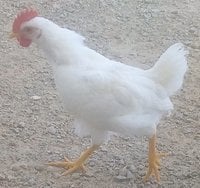thenewchickfarm
In the Brooder
- Jun 18, 2018
- 17
- 26
- 49
I am really wondering if too much reading is a bad thing... We wanted to start sexing our chicks and separate them. Out of 11 chicks 6 have real nice red combs (1 comb is still slightly pink) with red waddles and 5 don't have red combs more of the pea comb and no waddle yet. At least 2 were crowing this morning. I will attempt to get some pictures posted and hopefully someone can help us out. I know the best way seems to be by the feathers but still lost. Also, what is the worst thing that can happen if hens are eating meat feed (22% protein)?




 What Jed said!
What Jed said!
